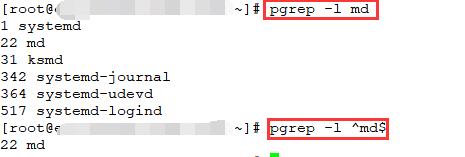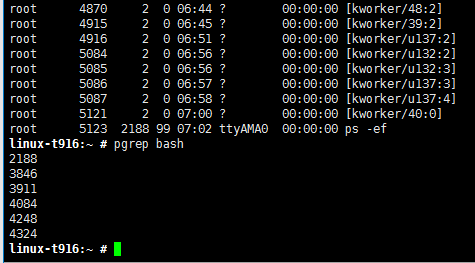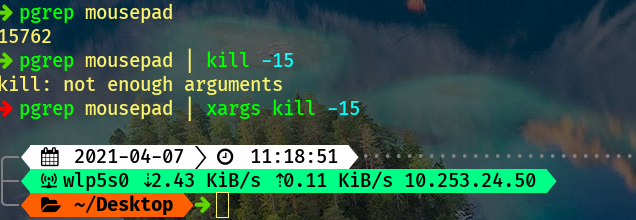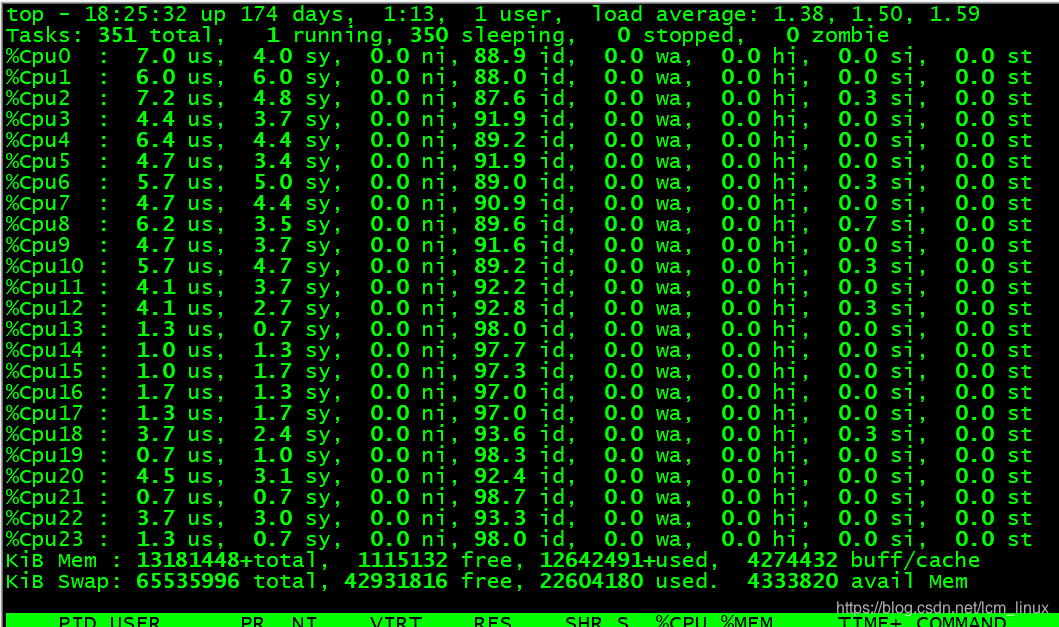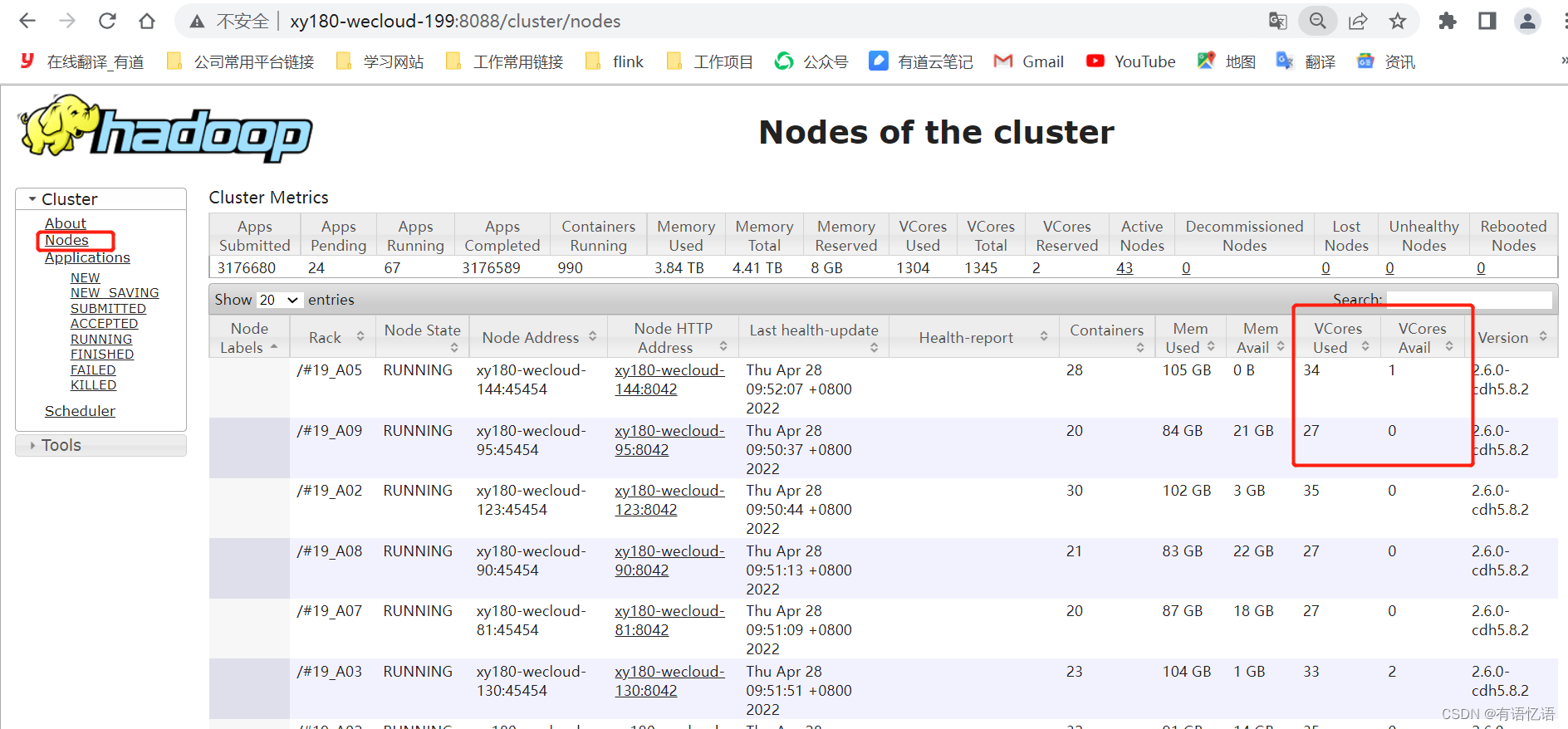http://lumaqq.linuxsir.org/article/qqwry_format_detail.html,这里就不多叙述了。
看下JAVA代码中怎么解析IP的吧。(代码参考至lumaQQ.谢谢开源作者luma)
解析的主类
package com.showtime.IPparse;
import java.io.File;
import java.io.FileNotFoundException;
import java.io.IOException;
import java.io.RandomAccessFile;
import java.nio.ByteOrder;
import java.nio.MappedByteBuffer;
import java.nio.channels.FileChannel;
import java.util.ArrayList;
import java.util.HashMap;
import java.util.List;
import java.util.Map;
import com.showtime.util.LogFactory;
import org.apache.log4j.Level;
public class IPSeeker {
//纯真IP数据库名
private String IP_FILE="QQWry.Dat";
//保存的文件夹
private String INSTALL_DIR="f:/qqwry";
// 一些固定常量,比如记录长度等等
private static final int IP_RECORD_LENGTH = 7;
private static final byte REDIRECT_MODE_1 = 0x01;
private static final byte REDIRECT_MODE_2 = 0x02;
// 用来做为cache,查询一个ip时首先查看cache,以减少不必要的重复查找
private Map ipCache;
// 随机文件访问类
private RandomAccessFile ipFile;
// 内存映射文件
private MappedByteBuffer mbb;
// 起始地区的开始和结束的绝对偏移
private long ipBegin, ipEnd;
// 为提高效率而采用的临时变量
private IPLocation loc;
private byte[] buf;
private byte[] b4;
private byte[] b3;
public IPSeeker(String fileName,String dir) {
this.INSTALL_DIR=dir;
this.IP_FILE=fileName;
ipCache = new HashMap();
loc = new IPLocation();
buf = new byte[100];
b4 = new byte[4];
b3 = new byte[3];
try {
ipFile = new RandomAccessFile(IP_FILE, "r");
} catch (FileNotFoundException e) {
// 如果找不到这个文件,再尝试再当前目录下搜索,这次全部改用小写文件名
// 因为有些系统可能区分大小写导致找不到ip地址信息文件
String filename = new File(IP_FILE).getName().toLowerCase();
File[] files = new File(INSTALL_DIR).listFiles();
for(int i = 0; i < files.length; i++) {
if(files[i].isFile()) {
if(files[i].getName().toLowerCase().equals(filename)) {
try {
ipFile = new RandomAccessFile(files[i], "r");
} catch (FileNotFoundException e1) {
LogFactory.log("IP地址信息文件没有找到,IP显示功能将无法使用",Level.ERROR,e1);
ipFile = null;
}
break;
}
}
}
}
// 如果打开文件成功,读取文件头信息
if(ipFile != null) {
try {
ipBegin = readLong4(0);
ipEnd = readLong4(4);
if(ipBegin == -1 || ipEnd == -1) {
ipFile.close();
ipFile = null;
}
} catch (IOException e) {
LogFactory.log("IP地址信息文件格式有错误,IP显示功能将无法使用",Level.ERROR,e);
ipFile = null;
}
}
}
/**
* 给定一个地点的不完全名字,得到一系列包含s子串的IP范围记录
* @param s 地点子串
* @return 包含IPEntry类型的List
*/
public List getIPEntriesDebug(String s) {
List ret = new ArrayList();
long endOffset = ipEnd + 4;
for(long offset = ipBegin + 4; offset <= endOffset; offset += IP_RECORD_LENGTH) {
// 读取结束IP偏移
long temp = readLong3(offset);
// 如果temp不等于-1,读取IP的地点信息
if(temp != -1) {
IPLocation ipLoc = getIPLocation(temp);
// 判断是否这个地点里面包含了s子串,如果包含了,添加这个记录到List中,如果没有,继续
if(ipLoc.getCountry().indexOf(s) != -1 || ipLoc.getArea().indexOf(s) != -1) {
IPEntry entry = new IPEntry();
entry.country = ipLoc.getCountry();
entry.area = ipLoc.getArea();
// 得到起始IP
readIP(offset - 4, b4);
entry.beginIp = Util.getIpStringFromBytes(b4);
// 得到结束IP
readIP(temp, b4);
entry.endIp = Util.getIpStringFromBytes(b4);
// 添加该记录
ret.add(entry);
}
}
}
return ret;
}
public IPLocation getIPLocation(String ip){
IPLocation location=new IPLocation();
location.setArea(this.getArea(ip));
location.setCountry(this.getCountry(ip));
return location;
}
/**
* 给定一个地点的不完全名字,得到一系列包含s子串的IP范围记录
* @param s 地点子串
* @return 包含IPEntry类型的List
*/
public List getIPEntries(String s) {
List ret = new ArrayList();
try {
// 映射IP信息文件到内存中
if(mbb == null) {
FileChannel fc = ipFile.getChannel();
mbb = fc.map(FileChannel.MapMode.READ_ONLY, 0, ipFile.length());
mbb.order(ByteOrder.LITTLE_ENDIAN);
}
int endOffset = (int)ipEnd;
for(int offset = (int)ipBegin + 4; offset <= endOffset; offset += IP_RECORD_LENGTH) {
int temp = readInt3(offset);
if(temp != -1) {
IPLocation ipLoc = getIPLocation(temp);
// 判断是否这个地点里面包含了s子串,如果包含了,添加这个记录到List中,如果没有,继续
if(ipLoc.getCountry().indexOf(s) != -1 || ipLoc.getArea().indexOf(s) != -1) {
IPEntry entry = new IPEntry();
entry.country = ipLoc.getCountry();
entry.area = ipLoc.getArea();
// 得到起始IP
readIP(offset - 4, b4);
entry.beginIp = Util.getIpStringFromBytes(b4);
// 得到结束IP
readIP(temp, b4);
entry.endIp = Util.getIpStringFromBytes(b4);
// 添加该记录
ret.add(entry);
}
}
}
} catch (IOException e) {
LogFactory.log("",Level.ERROR,e);
}
return ret;
}
/**
* 从内存映射文件的offset位置开始的3个字节读取一个int
* @param offset
* @return
*/
private int readInt3(int offset) {
mbb.position(offset);
return mbb.getInt() & 0x00FFFFFF;
}
/**
* 从内存映射文件的当前位置开始的3个字节读取一个int
* @return
*/
private int readInt3() {
return mbb.getInt() & 0x00FFFFFF;
}
/**
* 根据IP得到国家名
* @param ip ip的字节数组形式
* @return 国家名字符串
*/
public String getCountry(byte[] ip) {
// 检查ip地址文件是否正常
if(ipFile == null)
return Message.bad_ip_file;
// 保存ip,转换ip字节数组为字符串形式
String ipStr = Util.getIpStringFromBytes(ip);
// 先检查cache中是否已经包含有这个ip的结果,没有再搜索文件
if(ipCache.containsKey(ipStr)) {
IPLocation ipLoc = ipCache.get(ipStr);
return ipLoc.getCountry();
} else {
IPLocation ipLoc = getIPLocation(ip);
ipCache.put(ipStr, ipLoc.getCopy());
return ipLoc.getCountry();
}
}
/**
* 根据IP得到国家名
* @param ip IP的字符串形式
* @return 国家名字符串
*/
public String getCountry(String ip) {
return getCountry(Util.getIpByteArrayFromString(ip));
}
/**
* 根据IP得到地区名
* @param ip ip的字节数组形式
* @return 地区名字符串
*/
public String getArea(byte[] ip) {
// 检查ip地址文件是否正常
if(ipFile == null)
return Message.bad_ip_file;
// 保存ip,转换ip字节数组为字符串形式
String ipStr = Util.getIpStringFromBytes(ip);
// 先检查cache中是否已经包含有这个ip的结果,没有再搜索文件
if(ipCache.containsKey(ipStr)) {
IPLocation ipLoc = ipCache.get(ipStr);
return ipLoc.getArea();
} else {
IPLocation ipLoc = getIPLocation(ip);
ipCache.put(ipStr, ipLoc.getCopy());
return ipLoc.getArea();
}
}
/**
* 根据IP得到地区名
* @param ip IP的字符串形式
* @return 地区名字符串
*/
public String getArea(String ip) {
return getArea(Util.getIpByteArrayFromString(ip));
}
/**
* 根据ip搜索ip信息文件,得到IPLocation结构,所搜索的ip参数从类成员ip中得到
* @param ip 要查询的IP
* @return IPLocation结构
*/
private IPLocation getIPLocation(byte[] ip) {
IPLocation info = null;
long offset = locateIP(ip);
if(offset != -1)
info = getIPLocation(offset);
if(info == null) {
info = new IPLocation();
info.setCountry ( Message.unknown_country);
info.setArea(Message.unknown_area);
}
return info;
}
/**
* 从offset位置读取4个字节为一个long,因为java为big-endian格式,所以没办法
* 用了这么一个函数来做转换
* @param offset
* @return 读取的long值,返回-1表示读取文件失败
*/
private long readLong4(long offset) {
long ret = 0;
try {
ipFile.seek(offset);
ret |= (ipFile.readByte() & 0xFF);
ret |= ((ipFile.readByte() << 8) & 0xFF00);
ret |= ((ipFile.readByte() << 16) & 0xFF0000);
ret |= ((ipFile.readByte() << 24) & 0xFF000000);
return ret;
} catch (IOException e) {
return -1;
}
}
/**
* 从offset位置读取3个字节为一个long,因为java为big-endian格式,所以没办法
* 用了这么一个函数来做转换
* @param offset 整数的起始偏移
* @return 读取的long值,返回-1表示读取文件失败
*/
private long readLong3(long offset) {
long ret = 0;
try {
ipFile.seek(offset);
ipFile.readFully(b3);
ret |= (b3[0] & 0xFF);
ret |= ((b3[1] << 8) & 0xFF00);
ret |= ((b3[2] << 16) & 0xFF0000);
return ret;
} catch (IOException e) {
return -1;
}
}
/**
* 从当前位置读取3个字节转换成long
* @return 读取的long值,返回-1表示读取文件失败
*/
private long readLong3() {
long ret = 0;
try {
ipFile.readFully(b3);
ret |= (b3[0] & 0xFF);
ret |= ((b3[1] << 8) & 0xFF00);
ret |= ((b3[2] << 16) & 0xFF0000);
return ret;
} catch (IOException e) {
return -1;
}
}
/**
* 从offset位置读取四个字节的ip地址放入ip数组中,读取后的ip为big-endian格式,但是
* 文件中是little-endian形式,将会进行转换
* @param offset
* @param ip
*/
private void readIP(long offset, byte[] ip) {
try {
ipFile.seek(offset);
ipFile.readFully(ip);
byte temp = ip[0];
ip[0] = ip[3];
ip[3] = temp;
temp = ip[1];
ip[1] = ip[2];
ip[2] = temp;
} catch (IOException e) {
LogFactory.log("",Level.ERROR,e);
}
}
/**
* 从offset位置读取四个字节的ip地址放入ip数组中,读取后的ip为big-endian格式,但是
* 文件中是little-endian形式,将会进行转换
* @param offset
* @param ip
*/
private void readIP(int offset, byte[] ip) {
mbb.position(offset);
mbb.get(ip);
byte temp = ip[0];
ip[0] = ip[3];
ip[3] = temp;
temp = ip[1];
ip[1] = ip[2];
ip[2] = temp;
}
/**
* 把类成员ip和beginIp比较,注意这个beginIp是big-endian的
* @param ip 要查询的IP
* @param beginIp 和被查询IP相比较的IP
* @return 相等返回0,ip大于beginIp则返回1,小于返回-1。
*/
private int compareIP(byte[] ip, byte[] beginIp) {
for(int i = 0; i < 4; i++) {
int r = compareByte(ip[i], beginIp[i]);
if(r != 0)
return r;
}
return 0;
}
/**
* 把两个byte当作无符号数进行比较
* @param b1
* @param b2
* @return 若b1大于b2则返回1,相等返回0,小于返回-1
*/
private int compareByte(byte b1, byte b2) {
if((b1 & 0xFF) > (b2 & 0xFF)) // 比较是否大于
return 1;
else if((b1 ^ b2) == 0)// 判断是否相等
return 0;
else
return -1;
}
/**
* 这个方法将根据ip的内容,定位到包含这个ip国家地区的记录处,返回一个绝对偏移
* 方法使用二分法查找。
* @param ip 要查询的IP
* @return 如果找到了,返回结束IP的偏移,如果没有找到,返回-1
*/
private long locateIP(byte[] ip) {
long m = 0;
int r;
// 比较第一个ip项
readIP(ipBegin, b4);
r = compareIP(ip, b4);
if(r == 0) return ipBegin;
else if(r < 0) return -1;
// 开始二分搜索
for(long i = ipBegin, j = ipEnd; i < j; ) {
m = getMiddleOffset(i, j);
readIP(m, b4);
r = compareIP(ip, b4);
// log.debug(Utils.getIpStringFromBytes(b));
if(r > 0)
i = m;
else if(r < 0) {
if(m == j) {
j -= IP_RECORD_LENGTH;
m = j;
} else
j = m;
} else
return readLong3(m + 4);
}
// 如果循环结束了,那么i和j必定是相等的,这个记录为最可能的记录,但是并非
// 肯定就是,还要检查一下,如果是,就返回结束地址区的绝对偏移
m = readLong3(m + 4);
readIP(m, b4);
r = compareIP(ip, b4);
if(r <= 0) return m;
else return -1;
}
/**
* 得到begin偏移和end偏移中间位置记录的偏移
* @param begin
* @param end
* @return
*/
private long getMiddleOffset(long begin, long end) {
long records = (end - begin) / IP_RECORD_LENGTH;
records >>= 1;
if(records == 0) records = 1;
return begin + records * IP_RECORD_LENGTH;
}
/**
* 给定一个ip国家地区记录的偏移,返回一个IPLocation结构
* @param offset 国家记录的起始偏移
* @return IPLocation对象
*/
private IPLocation getIPLocation(long offset) {
try {
// 跳过4字节ip
ipFile.seek(offset + 4);
// 读取第一个字节判断是否标志字节
byte b = ipFile.readByte();
if(b == REDIRECT_MODE_1) {
// 读取国家偏移
long countryOffset = readLong3();
// 跳转至偏移处
ipFile.seek(countryOffset);
// 再检查一次标志字节,因为这个时候这个地方仍然可能是个重定向
b = ipFile.readByte();
if(b == REDIRECT_MODE_2) {
loc.setCountry ( readString(readLong3()));
ipFile.seek(countryOffset + 4);
} else
loc.setCountry ( readString(countryOffset));
// 读取地区标志
loc.setArea( readArea(ipFile.getFilePointer()));
} else if(b == REDIRECT_MODE_2) {
loc.setCountry ( readString(readLong3()));
loc.setArea( readArea(offset + 8));
} else {
loc.setCountry ( readString(ipFile.getFilePointer() - 1));
loc.setArea( readArea(ipFile.getFilePointer()));
}
return loc;
} catch (IOException e) {
return null;
}
}
/**
* 给定一个ip国家地区记录的偏移,返回一个IPLocation结构,此方法应用与内存映射文件方式
* @param offset 国家记录的起始偏移
* @return IPLocation对象
*/
private IPLocation getIPLocation(int offset) {
// 跳过4字节ip
mbb.position(offset + 4);
// 读取第一个字节判断是否标志字节
byte b = mbb.get();
if(b == REDIRECT_MODE_1) {
// 读取国家偏移
int countryOffset = readInt3();
// 跳转至偏移处
mbb.position(countryOffset);
// 再检查一次标志字节,因为这个时候这个地方仍然可能是个重定向
b = mbb.get();
if(b == REDIRECT_MODE_2) {
loc.setCountry ( readString(readInt3()));
mbb.position(countryOffset + 4);
} else
loc.setCountry ( readString(countryOffset));
// 读取地区标志
loc.setArea(readArea(mbb.position()));
} else if(b == REDIRECT_MODE_2) {
loc.setCountry ( readString(readInt3()));
loc.setArea(readArea(offset + 8));
} else {
loc.setCountry ( readString(mbb.position() - 1));
loc.setArea(readArea(mbb.position()));
}
return loc;
}
/**
* 从offset偏移开始解析后面的字节,读出一个地区名
* @param offset 地区记录的起始偏移
* @return 地区名字符串
* @throws IOException
*/
private String readArea(long offset) throws IOException {
ipFile.seek(offset);
byte b = ipFile.readByte();
if(b == REDIRECT_MODE_1 || b == REDIRECT_MODE_2) {
long areaOffset = readLong3(offset + 1);
if(areaOffset == 0)
return Message.unknown_area;
else
return readString(areaOffset);
} else
return readString(offset);
}
/**
* @param offset 地区记录的起始偏移
* @return 地区名字符串
*/
private String readArea(int offset) {
mbb.position(offset);
byte b = mbb.get();
if(b == REDIRECT_MODE_1 || b == REDIRECT_MODE_2) {
int areaOffset = readInt3();
if(areaOffset == 0)
return Message.unknown_area;
else
return readString(areaOffset);
} else
return readString(offset);
}
/**
* 从offset偏移处读取一个以0结束的字符串
* @param offset 字符串起始偏移
* @return 读取的字符串,出错返回空字符串
*/
private String readString(long offset) {
try {
ipFile.seek(offset);
int i;
for(i = 0, buf[i] = ipFile.readByte(); buf[i] != 0; buf[++i] = ipFile.readByte());
if(i != 0)
return Util.getString(buf, 0, i, "GBK");
} catch (IOException e) {
LogFactory.log("",Level.ERROR,e);
}
return "";
}
/**
* 从内存映射文件的offset位置得到一个0结尾字符串
* @param offset 字符串起始偏移
* @return 读取的字符串,出错返回空字符串
*/
private String readString(int offset) {
try {
mbb.position(offset);
int i;
for(i = 0, buf[i] = mbb.get(); buf[i] != 0; buf[++i] = mbb.get());
if(i != 0)
return Util.getString(buf, 0, i, "GBK");
} catch (IllegalArgumentException e) {
LogFactory.log("",Level.ERROR,e);
}
return "";
}
}
在实际项目用我使用spring注入IP地址库文件的名字和所在目录,并能保证IPSeeker的单一实例。
下面是个工具类,把string和btye数组之间互相转换的类。
package com.showtime.IPparse;
import java.io.UnsupportedEncodingException;
import java.util.StringTokenizer;
import org.apache.log4j.Level;
import com.showtime.util.LogFactory;
/**
* 工具类,提供一些方便的方法
*/
public class Util {
private static StringBuilder sb = new StringBuilder();
/**
* 从ip的字符串形式得到字节数组形式
* @param ip 字符串形式的ip
* @return 字节数组形式的ip
*/
public static byte[] getIpByteArrayFromString(String ip) {
byte[] ret = new byte[4];
StringTokenizer st = new StringTokenizer(ip, ".");
try {
ret[0] = (byte)(Integer.parseInt(st.nextToken()) & 0xFF);
ret[1] = (byte)(Integer.parseInt(st.nextToken()) & 0xFF);
ret[2] = (byte)(Integer.parseInt(st.nextToken()) & 0xFF);
ret[3] = (byte)(Integer.parseInt(st.nextToken()) & 0xFF);
} catch (Exception e) {
LogFactory.log("从ip的字符串形式得到字节数组形式报错", Level.ERROR, e);
}
return ret;
}
/**
* @param ip ip的字节数组形式
* @return 字符串形式的ip
*/
public static String getIpStringFromBytes(byte[] ip) {
sb.delete(0, sb.length());
sb.append(ip[0] & 0xFF);
sb.append('.');
sb.append(ip[1] & 0xFF);
sb.append('.');
sb.append(ip[2] & 0xFF);
sb.append('.');
sb.append(ip[3] & 0xFF);
return sb.toString();
}
/**
* 根据某种编码方式将字节数组转换成字符串
* @param b 字节数组
* @param offset 要转换的起始位置
* @param len 要转换的长度
* @param encoding 编码方式
* @return 如果encoding不支持,返回一个缺省编码的字符串
*/
public static String getString(byte[] b, int offset, int len, String encoding) {
try {
return new String(b, offset, len, encoding);
} catch (UnsupportedEncodingException e) {
return new String(b, offset, len);
}
}
}
下面是个常量值的类,用接口形式来定义省事不少。
package com.showtime.IPparse;
public interface Message {
String bad_ip_file="IP地址库文件错误";
String unknown_country="未知国家";
String unknown_area="未知地区";
}
一个封装国家和地区的实体类
package com.showtime.IPparse;
/**
*
* @category 用来封装ip相关信息,目前只有两个字段,ip所在的国家和地区
*/
public class IPLocation {
private String country;
private String area;
public IPLocation() {
country = area = "";
}
public IPLocation getCopy() {
IPLocation ret = new IPLocation();
ret.country = country;
ret.area = area;
return ret;
}
public String getCountry() {
return country;
}
public void setCountry(String country) {
this.country = country;
}
public String getArea() {
return area;
}
public void setArea(String area) {
//如果为局域网,纯真IP地址库的地区会显示CZ88.NET,这里把它去掉
if(area.trim().equals("CZ88.NET")){
this.area="本机或本网络";
}else{
this.area = area;
}
}
}
一下是一个范围记录的类
package com.showtime.IPparse;
/**
*
* 一条IP范围记录,不仅包括国家和区域,也包括起始IP和结束IP
*
*/
public class IPEntry {
public String beginIp;
public String endIp;
public String country;
public String area;
/**
* 构造函数
*/
public IPEntry() {
beginIp = endIp = country = area = "";
}
}
日志记录类
package com.showtime.util;
import org.apache.log4j.Level;
import org.apache.log4j.Logger;
/**
*
*
* 日志工厂
*/
public class LogFactory {
private static final Logger logger;
static {
logger = Logger.getLogger("stdout");
logger.setLevel(Level.DEBUG);
}
public static void log(String info, Level level, Throwable ex) {
logger.log(level, info, ex);
}
public static Level getLogLevel(){
return logger.getLevel();
}
}
下面是测试类
package com.showtime.IPparse;
import junit.framework.TestCase;
public class IPtest extends TestCase {
public void testIp(){
//指定纯真数据库的文件名,所在文件夹
IPSeeker ip=new IPSeeker("QQWry.Dat","f:/qqwry");
//测试IP 58.20.43.13
System.out.println(ip.getIPLocation("58.20.43.13").getCountry()+":"+ip.getIPLocation("58.20.43.13").getArea());
}
}
当输出:湖南省长沙市:网通
大功告成。
传了半天,项目只有18K,怎么传不上来呢,先发了帖子再说吧。
分享到:


2009-02-28 10:38
浏览 20511
论坛回复 / 浏览 (8 / 28436)
评论
15 楼
chelsi0916
2015-02-10

14 楼
tianhandigeng
2011-12-16
不能获取具体的城市吗,输出getArea的输出时地区时有点问题,不能想获取省就获取省,想获取市就是市吗?我现在是成都市IP,用getArea获取的就是四川省成都市,我只想获取市,该怎么做?我qq是874904507,知道的指导一下吧
13 楼
gundumw100
2010-01-22
看下源码(声明一下:也不是我的)
package com.worthtech.app.util.ip;
import java.io.FileNotFoundException;
import java.io.IOException;
import java.io.RandomAccessFile;
import java.nio.ByteOrder;
import java.nio.MappedByteBuffer;
import java.nio.channels.FileChannel;
import java.util.ArrayList;
import java.util.Hashtable;
import java.util.List;
/**
*
* 用来读取QQwry.dat文件,以根据ip获得好友位置,QQwry.dat的格式是
* 一. 文件头,共8字节
* 1. 第一个起始IP的绝对偏移, 4字节
* 2. 最后一个起始IP的绝对偏移, 4字节
* 二. "结束地址/国家/区域"记录区
* 四字节ip地址后跟的每一条记录分成两个部分
* 1. 国家记录
* 2. 地区记录
* 但是地区记录是不一定有的。而且国家记录和地区记录都有两种形式
* 1. 以0结束的字符串
* 2. 4个字节,一个字节可能为0x1或0x2
* a. 为0x1时,表示在绝对偏移后还跟着一个区域的记录,注意是绝对偏移之后,而不是这四个字节之后
* b. 为0x2时,表示在绝对偏移后没有区域记录
* 不管为0x1还是0x2,后三个字节都是实际国家名的文件内绝对偏移
* 如果是地区记录,0x1和0x2的含义不明,但是如果出现这两个字节,也肯定是跟着3个字节偏移,如果不是
* 则为0结尾字符串
* 三. "起始地址/结束地址偏移"记录区
* 1. 每条记录7字节,按照起始地址从小到大排列
* a. 起始IP地址,4字节
* b. 结束ip地址的绝对偏移,3字节
*
* 注意,这个文件里的ip地址和所有的偏移量均采用little-endian格式,而java是采用
* big-endian格式的,要注意转换
*
*
* @author 马若劼
*/
public class IPSeeker {
/**
*
* 用来封装ip相关信息,目前只有两个字段,ip所在的国家和地区
*
*
* @author 马若劼
*/
private class IPLocation {
public String country;
public String area;
public IPLocation() {
country = area = "";
}
public IPLocation getCopy() {
IPLocation ret = new IPLocation();
ret.country = country;
ret.area = area;
return ret;
}
}
private static final String IP_FILE = IPSeeker.class.getResource(
"QQWry.dat").toString().substring(5);
// 一些固定常量,比如记录长度等等
private static final int IP_RECORD_LENGTH = 7;
private static final byte AREA_FOLLOWED = 0x01;
private static final byte NO_AREA = 0x2;
// 用来做为cache,查询一个ip时首先查看cache,以减少不必要的重复查找
private final Hashtable ipCache;
// 随机文件访问类
private RandomAccessFile ipFile;
// 内存映射文件
private MappedByteBuffer mbb;
// 单一模式实例
private static IPSeeker instance = new IPSeeker();
// 起始地区的开始和结束的绝对偏移
private long ipBegin, ipEnd;
// 为提高效率而采用的临时变量
private final IPLocation loc;
//private final byte[] buf;//不需要了
private final byte[] b4;
private final byte[] b3;
/**
* 私有构造函数
*/
private IPSeeker() {
ipCache = new Hashtable();
loc = new IPLocation();
//buf = new byte[100];//不需要了,这里初始化不好!
b4 = new byte[4];
b3 = new byte[3];
try {
ipFile = new RandomAccessFile(IP_FILE, "r");
} catch (FileNotFoundException e) {
System.out.println(IPSeeker.class.getResource("QQWry.dat").toString());
System.out.println(IP_FILE);
System.out.println("IP地址信息文件没有找到,IP显示功能将无法使用");
ipFile = null;
}
// 如果打开文件成功,读取文件头信息
if (ipFile != null) {
try {
ipBegin = readLong4(0);
ipEnd = readLong4(4);
if (ipBegin == -1 || ipEnd == -1) {
ipFile.close();
ipFile = null;
}
} catch (IOException e) {
System.out.println("IP地址信息文件格式有错误,IP显示功能将无法使用");
ipFile = null;
}
}
}
/**
* @return 单一实例
*/
public static IPSeeker getInstance() {
return instance;
}
/**
* 给定一个地点的不完全名字,得到一系列包含s子串的IP范围记录
*
* @param s
* 地点子串
* @return 包含IPEntry类型的List
*/
public List getIPEntriesDebug(String s) {
List ret = new ArrayList();
long endOffset = ipEnd + 4;
for (long offset = ipBegin + 4; offset <= endOffset; offset += IP_RECORD_LENGTH) {
// 读取结束IP偏移
long temp = readLong3(offset);
// 如果temp不等于-1,读取IP的地点信息
if (temp != -1) {
IPLocation loc = getIPLocation(temp);
// 判断是否这个地点里面包含了s子串,如果包含了,添加这个记录到List中,如果没有,继续
if (loc.country.indexOf(s) != -1 || loc.area.indexOf(s) != -1) {
IPEntry entry = new IPEntry();
entry.country = loc.country;
entry.area = loc.area;
// 得到起始IP
readIP(offset - 4, b4);
entry.beginIp = Utils.getIpStringFromBytes(b4);
// 得到结束IP
readIP(temp, b4);
entry.endIp = Utils.getIpStringFromBytes(b4);
// 添加该记录
ret.add(entry);
}
}
}
return ret;
}
/**
* 给定一个地点的不完全名字,得到一系列包含s子串的IP范围记录
*
* @param s
* 地点子串
* @return 包含IPEntry类型的List
*/
public List getIPEntries(String s) {
List ret = new ArrayList();
try {
// 映射IP信息文件到内存中
if (mbb == null) {
FileChannel fc = ipFile.getChannel();
mbb = fc.map(FileChannel.MapMode.READ_ONLY, 0, ipFile.length());
mbb.order(ByteOrder.LITTLE_ENDIAN);
}
int endOffset = (int) ipEnd;
for (int offset = (int) ipBegin + 4; offset <= endOffset; offset += IP_RECORD_LENGTH) {
int temp = readInt3(offset);
if (temp != -1) {
IPLocation loc = getIPLocation(temp);
// 判断是否这个地点里面包含了s子串,如果包含了,添加这个记录到List中,如果没有,继续
if (loc.country.indexOf(s) != -1
|| loc.area.indexOf(s) != -1) {
IPEntry entry = new IPEntry();
entry.country = loc.country;
entry.area = loc.area;
// 得到起始IP
readIP(offset - 4, b4);
entry.beginIp = Utils.getIpStringFromBytes(b4);
// 得到结束IP
readIP(temp, b4);
entry.endIp = Utils.getIpStringFromBytes(b4);
// 添加该记录
ret.add(entry);
}
}
}
} catch (IOException e) {
System.out.println(e.getMessage());
}
return ret;
}
/**
* 从内存映射文件的offset位置开始的3个字节读取一个int
*
* @param offset
* @return
*/
private int readInt3(int offset) {
mbb.position(offset);
return mbb.getInt() & 0x00FFFFFF;
}
/**
* 从内存映射文件的当前位置开始的3个字节读取一个int
*
* @return
*/
private int readInt3() {
return mbb.getInt() & 0x00FFFFFF;
}
/**
* 根据IP得到国家名
*
* @param ip
* ip的字节数组形式
* @return 国家名字符串
*/
public String getCountry(byte[] ip) {
// 检查ip地址文件是否正常
if (ipFile == null)
return "错误的IP数据库文件";
// 保存ip,转换ip字节数组为字符串形式
String ipStr = Utils.getIpStringFromBytes(ip);
// 先检查cache中是否已经包含有这个ip的结果,没有再搜索文件
if (ipCache.containsKey(ipStr)) {
IPLocation loc = (IPLocation) ipCache.get(ipStr);
return loc.country;
} else {
IPLocation loc = getIPLocation(ip);
ipCache.put(ipStr, loc.getCopy());
return loc.country;
}
}
/**
* 根据IP得到国家名
*
* @param ip
* IP的字符串形式
* @return 国家名字符串
*/
public String getCountry(String ip) {
return getCountry(Utils.getIpByteArrayFromString(ip));
}
/**
* 根据IP得到地区名
*
* @param ip
* ip的字节数组形式
* @return 地区名字符串
*/
public String getArea(byte[] ip) {
// 检查ip地址文件是否正常
if (ipFile == null)
return "错误的IP数据库文件";
// 保存ip,转换ip字节数组为字符串形式
String ipStr = Utils.getIpStringFromBytes(ip);
// 先检查cache中是否已经包含有这个ip的结果,没有再搜索文件
if (ipCache.containsKey(ipStr)) {
IPLocation loc = (IPLocation) ipCache.get(ipStr);
return loc.area;
} else {
IPLocation loc = getIPLocation(ip);
ipCache.put(ipStr, loc.getCopy());
return loc.area;
}
}
/**
* 根据IP得到地区名
*
* @param ip
* IP的字符串形式
* @return 地区名字符串
*/
public String getArea(String ip) {
return getArea(Utils.getIpByteArrayFromString(ip));
}
/**
* 根据ip搜索ip信息文件,得到IPLocation结构,所搜索的ip参数从类成员ip中得到
*
* @param ip
* 要查询的IP
* @return IPLocation结构
*/
private IPLocation getIPLocation(byte[] ip) {
IPLocation info = null;
long offset = locateIP(ip);
if (offset != -1)
info = getIPLocation(offset);
if (info == null) {
info = new IPLocation();
info.country = "未知国家";
info.area = "未知地区";
}
return info;
}
/**
* 从offset位置读取4个字节为一个long,因为java为big-endian格式,所以没办法 用了这么一个函数来做转换
*
* @param offset
* @return 读取的long值,返回-1表示读取文件失败
*/
private long readLong4(long offset) {
long ret = 0;
try {
ipFile.seek(offset);
ret |= (ipFile.readByte() & 0xFF);
ret |= ((ipFile.readByte() << 8) & 0xFF00);
ret |= ((ipFile.readByte() << 16) & 0xFF0000);
ret |= ((ipFile.readByte() << 24) & 0xFF000000);
return ret;
} catch (IOException e) {
return -1;
}
}
/**
* 从offset位置读取3个字节为一个long,因为java为big-endian格式,所以没办法 用了这么一个函数来做转换
*
* @param offset
* @return 读取的long值,返回-1表示读取文件失败
*/
private long readLong3(long offset) {
long ret = 0;
try {
ipFile.seek(offset);
ipFile.readFully(b3);
ret |= (b3[0] & 0xFF);
ret |= ((b3[1] << 8) & 0xFF00);
ret |= ((b3[2] << 16) & 0xFF0000);
return ret;
} catch (IOException e) {
return -1;
}
}
/**
* 从当前位置读取3个字节转换成long
*
* @return
*/
private long readLong3() {
long ret = 0;
try {
ipFile.readFully(b3);
ret |= (b3[0] & 0xFF);
ret |= ((b3[1] << 8) & 0xFF00);
ret |= ((b3[2] << 16) & 0xFF0000);
return ret;
} catch (IOException e) {
return -1;
}
}
/**
* 从offset位置读取四个字节的ip地址放入ip数组中,读取后的ip为big-endian格式,但是
* 文件中是little-endian形式,将会进行转换
*
* @param offset
* @param ip
*/
private void readIP(long offset, byte[] ip) {
try {
ipFile.seek(offset);
ipFile.readFully(ip);
byte temp = ip[0];
ip[0] = ip[3];
ip[3] = temp;
temp = ip[1];
ip[1] = ip[2];
ip[2] = temp;
} catch (IOException e) {
System.out.println(e.getMessage());
}
}
/**
* 从offset位置读取四个字节的ip地址放入ip数组中,读取后的ip为big-endian格式,但是
* 文件中是little-endian形式,将会进行转换
*
* @param offset
* @param ip
*/
private void readIP(int offset, byte[] ip) {
mbb.position(offset);
mbb.get(ip);
byte temp = ip[0];
ip[0] = ip[3];
ip[3] = temp;
temp = ip[1];
ip[1] = ip[2];
ip[2] = temp;
}
/**
* 把类成员ip和beginIp比较,注意这个beginIp是big-endian的
*
* @param ip
* 要查询的IP
* @param beginIp
* 和被查询IP相比较的IP
* @return 相等返回0,ip大于beginIp则返回1,小于返回-1。
*/
private int compareIP(byte[] ip, byte[] beginIp) {
for (int i = 0; i < 4; i++) {
int r = compareByte(ip[i], beginIp[i]);
if (r != 0)
return r;
}
return 0;
}
/**
* 把两个byte当作无符号数进行比较
*
* @param b1
* @param b2
* @return 若b1大于b2则返回1,相等返回0,小于返回-1
*/
private int compareByte(byte b1, byte b2) {
if ((b1 & 0xFF) > (b2 & 0xFF)) // 比较是否大于
return 1;
else if ((b1 ^ b2) == 0)// 判断是否相等
return 0;
else
return -1;
}
/**
* 这个方法将根据ip的内容,定位到包含这个ip国家地区的记录处,返回一个绝对偏移 方法使用二分法查找。
*
* @param ip
* 要查询的IP
* @return 如果找到了,返回结束IP的偏移,如果没有找到,返回-1
*/
private long locateIP(byte[] ip) {
long m = 0;
int r;
// 比较第一个ip项
readIP(ipBegin, b4);
r = compareIP(ip, b4);
if (r == 0)
return ipBegin;
else if (r < 0)
return -1;
// 开始二分搜索
for (long i = ipBegin, j = ipEnd; i < j;) {
m = getMiddleOffset(i, j);
readIP(m, b4);
r = compareIP(ip, b4);
// log.debug(Utils.getIpStringFromBytes(b));
if (r > 0)
i = m;
else if (r < 0) {
if (m == j) {
j -= IP_RECORD_LENGTH;
m = j;
} else
j = m;
} else
return readLong3(m + 4);
}
// 如果循环结束了,那么i和j必定是相等的,这个记录为最可能的记录,但是并非
// 肯定就是,还要检查一下,如果是,就返回结束地址区的绝对偏移
m = readLong3(m + 4);
readIP(m, b4);
r = compareIP(ip, b4);
if (r <= 0)
return m;
else
return -1;
}
/**
* 得到begin偏移和end偏移中间位置记录的偏移
*
* @param begin
* @param end
* @return
*/
private long getMiddleOffset(long begin, long end) {
long records = (end - begin) / IP_RECORD_LENGTH;
records >>= 1;
if (records == 0)
records = 1;
return begin + records * IP_RECORD_LENGTH;
}
/**
* 给定一个ip国家地区记录的偏移,返回一个IPLocation结构
*
* @param offset
* @return
*/
private IPLocation getIPLocation(long offset) {
try {
// 跳过4字节ip
ipFile.seek(offset + 4);
// 读取第一个字节判断是否标志字节
byte b = ipFile.readByte();
if (b == AREA_FOLLOWED) {
// 读取国家偏移
long countryOffset = readLong3();
// 跳转至偏移处
ipFile.seek(countryOffset);
// 再检查一次标志字节,因为这个时候这个地方仍然可能是个重定向
b = ipFile.readByte();
if (b == NO_AREA) {
loc.country = readString(readLong3());
ipFile.seek(countryOffset + 4);
} else
loc.country = readString(countryOffset);
// 读取地区标志
loc.area = readArea(ipFile.getFilePointer());
} else if (b == NO_AREA) {
loc.country = readString(readLong3());
loc.area = readArea(offset + 8);
} else {
loc.country = readString(ipFile.getFilePointer() - 1);
loc.area = readArea(ipFile.getFilePointer());
}
return loc;
} catch (IOException e) {
return null;
}
}
/**
* @param offset
* @return
*/
private IPLocation getIPLocation(int offset) {
// 跳过4字节ip
mbb.position(offset + 4);
// 读取第一个字节判断是否标志字节
byte b = mbb.get();
if (b == AREA_FOLLOWED) {
// 读取国家偏移
int countryOffset = readInt3();
// 跳转至偏移处
mbb.position(countryOffset);
// 再检查一次标志字节,因为这个时候这个地方仍然可能是个重定向
b = mbb.get();
if (b == NO_AREA) {
loc.country = readString(readInt3());
mbb.position(countryOffset + 4);
} else
loc.country = readString(countryOffset);
// 读取地区标志
loc.area = readArea(mbb.position());
} else if (b == NO_AREA) {
loc.country = readString(readInt3());
loc.area = readArea(offset + 8);
} else {
loc.country = readString(mbb.position() - 1);
loc.area = readArea(mbb.position());
}
return loc;
}
/**
* 从offset偏移开始解析后面的字节,读出一个地区名
*
* @param offset
* @return 地区名字符串
* @throws IOException
*/
private String readArea(long offset) throws IOException {
ipFile.seek(offset);
byte b = ipFile.readByte();
if (b == 0x01 || b == 0x02) {
long areaOffset = readLong3(offset + 1);
if (areaOffset == 0)
return "未知地区";
else
return readString(areaOffset);
} else
return readString(offset);
}
/**
* @param offset
* @return
*/
private String readArea(int offset) {
mbb.position(offset);
byte b = mbb.get();
if (b == 0x01 || b == 0x02) {
int areaOffset = readInt3();
if (areaOffset == 0)
return "未知地区";
else
return readString(areaOffset);
} else
return readString(offset);
}
/**
* 从offset偏移处读取一个以0结束的字符串
*
* @param offset
* @return 读取的字符串,出错返回空字符串
*/
private String readString(long offset) {
try {
ipFile.seek(offset);
//int i;
//for (i = 0, buf[i] = ipFile.readByte(); buf[i] != 0; buf[++i] = ipFile.readByte());
//上面的写法读取数据如果超过100个字节就会报数组越界异常
int i = 0;
byte[] buf = new byte[256];
while ((buf[i] = ipFile.readByte()) != 0) {
++ i;
if (i >= buf.length) {
byte[] tmp = new byte[i + 100];
System.arraycopy(buf, 0, tmp, 0, i);
buf = tmp;
}
}
/
if (i != 0)
return Utils.getString(buf, 0, i, "GBK");
} catch (IOException e) {
System.out.println(e.getMessage());
}
return "";
}
/**
* 从内存映射文件的offset位置得到一个0结尾字符串
*
* @param offset
* @return
*/
private String readString(int offset) {
try {
mbb.position(offset);
//int i;
//for (i = 0, buf[i] = mbb.get(); buf[i] != 0; buf[++i] = mbb.get());
int i = 0;
byte[] buf = new byte[256];
while ((buf[i] = mbb.get()) != 0) {
++ i;
if (i >= buf.length) {
byte[] tmp = new byte[i + 100];
System.arraycopy(buf, 0, tmp, 0, i);
buf = tmp;
}
}
if (i != 0)
return Utils.getString(buf, 0, i, "GBK");
} catch (IllegalArgumentException e) {
System.out.println(e.getMessage());
}
return "";
}
public String getAddress(String ip) {
String country = getCountry(ip).equals(" CZ88.NET") ? ""
: getCountry(ip);
String area = getArea(ip).equals(" CZ88.NET") ? "" : getArea(ip);
String address = country + " " + area;
return address.trim();
}
}
12 楼
gundumw100
2010-01-22
这么这个版本和我的不一样
IPSeeker.getInstance()哪里去了?
兄弟不会是在别人的基础上改的吧?
11 楼
gundumw100
2010-01-22
//readString推荐这样写
private String readString(int offset) {
try {
mbb.position(offset);
//int i;
//for (i = 0, buf[i] = mbb.get(); buf[i] != 0; buf[++i] = mbb.get());
int i = 0;
byte[] buf = new byte[100];
while ((buf[i] = mbb.get()) != 0) {
++ i;
if (i >= buf.length) {
byte[] tmp = new byte[i + 100];
System.arraycopy(buf, 0, tmp, 0, i);
buf = tmp;
}
}
if (i != 0)
return Utils.getString(buf, 0, i, "GBK");
} catch (IllegalArgumentException e) {
System.out.println(e.getMessage());
}
return "";
}
或者构造函数里面把buf放大:
buf = new byte[1024];
就能解决上面的异常,原因是buf 太小了
10 楼
gundumw100
2010-01-22
IPSeeker seeker = IPSeeker.getInstance();
List list=seeker.getIPEntries("上海市");
抛java.lang.ArrayIndexOutOfBoundsException异常
IPSeeker.readString(int)这里抛出来的!
9 楼
spook99
2009-10-15
小弟有一事不明
// 用来做为cache,查询一个ip时首先查看cache,以减少不必要的重复查找
private Map ipCache;
这个缓存如果调用多次,是否还起到缓存的作用啊,因为放到web上是多线程的。并发是否安全。不知道楼主考虑了类似的问题没有。
8 楼
zhiblin
2009-06-15
ferreousbox 写道
readString方法中如下的代码有缺陷:
for(i = 0, buf[i] = ipFile.readByte(); buf[i] != 0; buf[++i] = ipFile.readByte());
读取数据如果超过100个字节就会报数组越界异常,我在通过地址查询IP记录时就出现了这个错误,建议改成如下代码:
int i = 0;
byte[] buf = new byte[100];
while ((buf[i] = ipFile.readByte()) != 0) {
++ i;
if (i >= buf.length) {
byte[] tmp = new byte[i + 100];
System.arraycopy(buf, 0, tmp, 0, i);
buf = tmp;
}
}
基本思路看懂了,谢谢楼主
7 楼
ferreousbox
2009-06-15
readString方法中如下的代码有缺陷:
for(i = 0, buf[i] = ipFile.readByte(); buf[i] != 0; buf[++i] = ipFile.readByte());
读取数据如果超过100个字节就会报数组越界异常,我在通过地址查询IP记录时就出现了这个错误,建议改成如下代码:
int i = 0;
byte[] buf = new byte[100];
while ((buf[i] = ipFile.readByte()) != 0) {
++ i;
if (i >= buf.length) {
byte[] tmp = new byte[i + 100];
System.arraycopy(buf, 0, tmp, 0, i);
buf = tmp;
}
}
6 楼
finux
2009-05-27
不错,谢谢!
不过...
1.
Util类中为什么要定义一个static的StringBuilder
private static StringBuilder sb = new StringBuilder();
StringBuilder并非线程安全的,也许换成StringBuffer会更好吧。
其实,倒不如直接在getIpStringFromBytes方法里面直接new一个局部的StrinbBuilder。
2.
对于IPSeeker类,如果在WEB应用中,用户来一个请求,难道我就要去new一个IPSeeker吗?我想也许整个工程只需要一个这样的实例就OK了吧。那么这样的话,那些public方法是不是也应该考虑同步呢?
呵呵。。。最近正需要一个这样的IPSeeker,无意看到此文,3Q~
5 楼
sdcyst
2009-05-05
能不能把源码搞出来?
4 楼
zyihang
2009-03-20
不错,收藏了
3 楼
shanghaif
2009-02-28
留个记号,继续关注。
2 楼
56071925
2009-02-28
很好一会慢慢研究!!(*^__^*) 嘻嘻……先回帖再说
1 楼
showtime520
2009-02-28
自己先做个沙发,怎么上传文件后,显示你访问的地址不存在呢!




